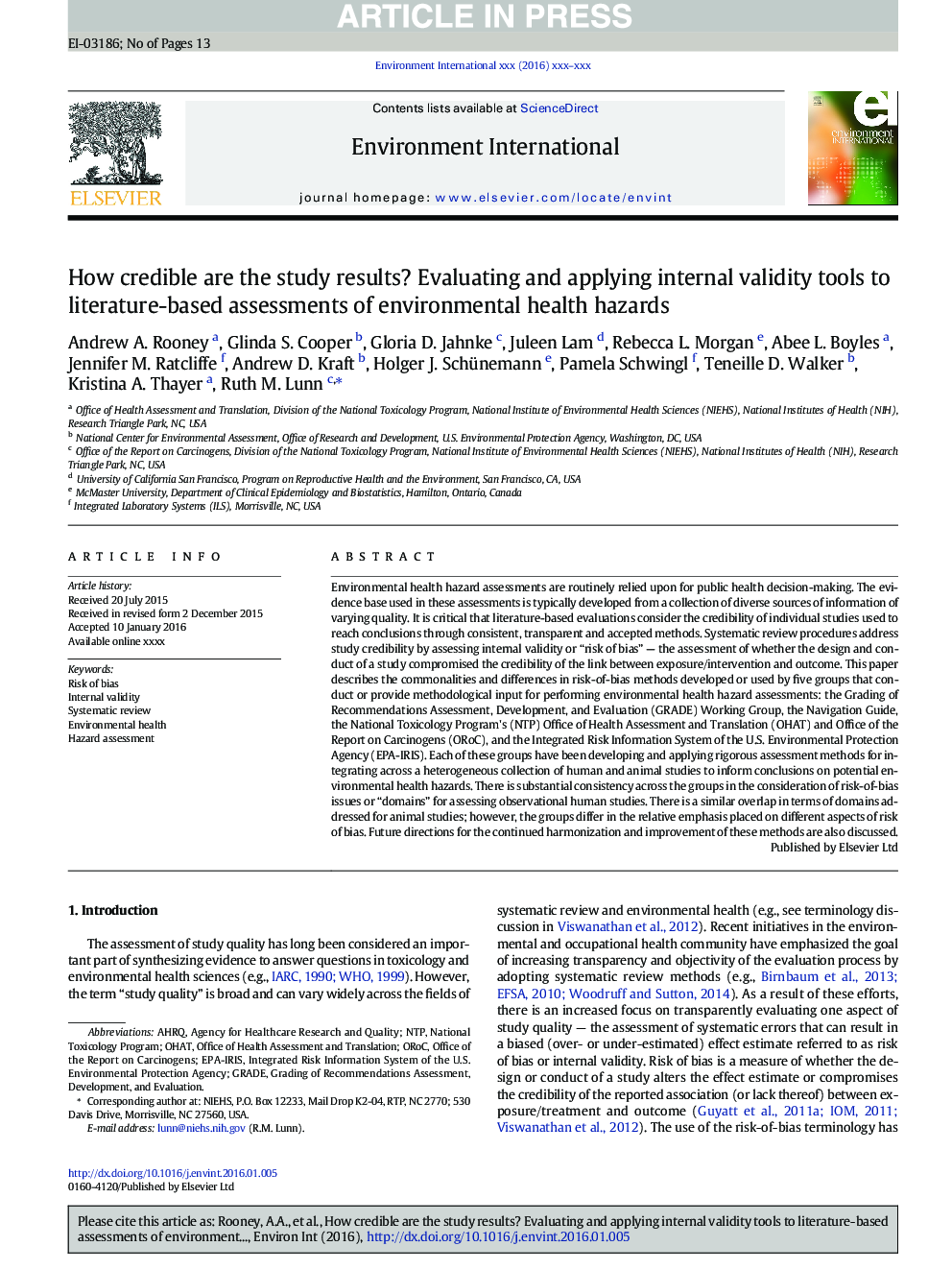| کد مقاله | کد نشریه | سال انتشار | مقاله انگلیسی | نسخه تمام متن |
|---|---|---|---|---|
| 6313100 | 1619037 | 2016 | 13 صفحه PDF | دانلود رایگان |
عنوان انگلیسی مقاله ISI
How credible are the study results? Evaluating and applying internal validity tools to literature-based assessments of environmental health hazards
ترجمه فارسی عنوان
نتایج مطالعات قابل اعتماد است؟ ارزیابی و استفاده از ابزار اعتبار داخلی برای ارزیابی ادبی مبتنی بر خطرات بهداشت محیط
دانلود مقاله + سفارش ترجمه
دانلود مقاله ISI انگلیسی
رایگان برای ایرانیان
کلمات کلیدی
NTPAHRQOHATAgency for Healthcare Research and Quality - آژانس تحقیقات و کیفیت بهداشت و درمانGrading of Recommendations Assessment, Development, and Evaluation - ارزیابی توصیه ها، توسعه، و ارزیابیHazard assessment - ارزیابی خطرInternal validity - اعتبار داخلیNational Toxicology Program - برنامه سم شناسی ملیEnvironmental health - بهداشت محیطrisk of bias - خطر تعصبSystematic review - مرور سیستماتیکGrade - مقطع تحصیلی
موضوعات مرتبط
علوم زیستی و بیوفناوری
علوم محیط زیست
شیمی زیست محیطی
چکیده انگلیسی
Environmental health hazard assessments are routinely relied upon for public health decision-making. The evidence base used in these assessments is typically developed from a collection of diverse sources of information of varying quality. It is critical that literature-based evaluations consider the credibility of individual studies used to reach conclusions through consistent, transparent and accepted methods. Systematic review procedures address study credibility by assessing internal validity or “risk of bias” - the assessment of whether the design and conduct of a study compromised the credibility of the link between exposure/intervention and outcome. This paper describes the commonalities and differences in risk-of-bias methods developed or used by five groups that conduct or provide methodological input for performing environmental health hazard assessments: the Grading of Recommendations Assessment, Development, and Evaluation (GRADE) Working Group, the Navigation Guide, the National Toxicology Program's (NTP) Office of Health Assessment and Translation (OHAT) and Office of the Report on Carcinogens (ORoC), and the Integrated Risk Information System of the U.S. Environmental Protection Agency (EPA-IRIS). Each of these groups have been developing and applying rigorous assessment methods for integrating across a heterogeneous collection of human and animal studies to inform conclusions on potential environmental health hazards. There is substantial consistency across the groups in the consideration of risk-of-bias issues or “domains” for assessing observational human studies. There is a similar overlap in terms of domains addressed for animal studies; however, the groups differ in the relative emphasis placed on different aspects of risk of bias. Future directions for the continued harmonization and improvement of these methods are also discussed.
ناشر
Database: Elsevier - ScienceDirect (ساینس دایرکت)
Journal: Environment International - Volumes 92â93, JulyâAugust 2016, Pages 617-629
Journal: Environment International - Volumes 92â93, JulyâAugust 2016, Pages 617-629
نویسندگان
Andrew A. Rooney, Glinda S. Cooper, Gloria D. Jahnke, Juleen Lam, Rebecca L. Morgan, Abee L. Boyles, Jennifer M. Ratcliffe, Andrew D. Kraft, Holger J. Schünemann, Pamela Schwingl, Teneille D. Walker, Kristina A. Thayer, Ruth M. Lunn,
